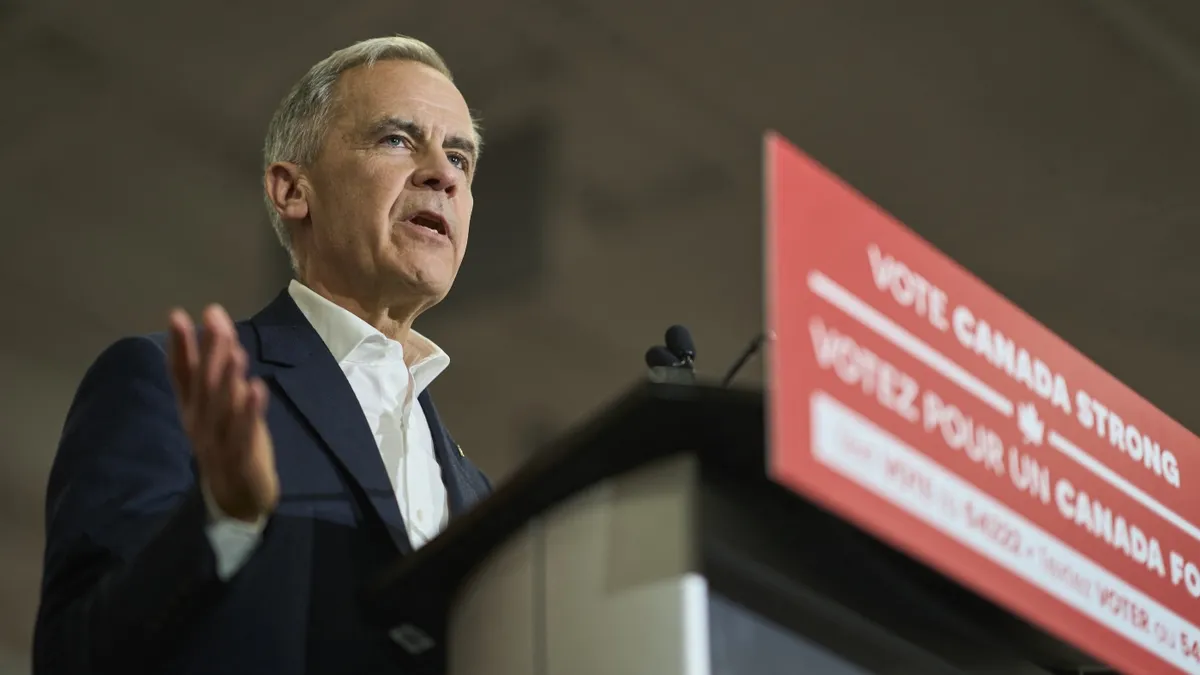
In a historic electoral outcome, Mark Carney has been elected as the new Prime Minister of Canada, according to projections made by the national broadcaster CBC/Radio Canada. This election is being hailed as one of the most significant in decades, reflecting the changing political landscape of the country. However, the final tally of seats is still pending, and it remains uncertain whether Carney’s Liberal Party will secure the 172 seats required for an outright majority in the Canadian Parliament.
The results of this election are expected to be finalized late Monday evening or early Tuesday morning. This vote was largely perceived as a referendum on which candidate could effectively manage relations with President Trump, whose presidency has been marked by a rise in nationalism that has reverberated across Canada. Trump’s threats to annex Canada and impose substantial tariffs have heightened concerns among Canadian voters.
Mark Carney, aged 60, has had a distinguished career in investment banking before stepping into the political arena. He served as the Governor of the Bank of England during the tumultuous Brexit period and held the position of Governor of the Bank of Canada during the 2008 financial crisis. Notably, Carney had never held any political office prior to his appointment as the leader of the Liberal Party in March. His extensive background in finance and his composed demeanor convinced many voters that he was the ideal candidate to confront Trump’s unpredictable policies.
Carney’s ascent to power came at the expense of Pierre Poilievre, the 45-year-old head of the Conservative Party and a veteran politician. Poilievre, who had previously enjoyed a commanding lead in the polls—at one point 27 points ahead of the Liberals—saw his fortunes reverse dramatically. The turning point occurred in January when former Prime Minister Justin Trudeau resigned. By the end of his decade-long tenure, Trudeau had become increasingly unpopular among Canadians, and his departure provided a much-needed boost to the Liberal Party.
The situation was further exacerbated by President Trump’s aggressive stance towards Canada’s economy and sovereignty. Many Canadians expressed outrage over Trump’s repeated threats to make Canada the 51st state, including a post on social media he made on election day. Notably, many of Poilievre’s policies and rhetoric have mirrored Trump’s, albeit in a more moderate tone. His campaign slogan, Canada First, emphasized stricter border controls, reduced government size, and a backlash against what right-wing factions label as “wokeness.” While these proposals initially resonated with some voters, Poilievre’s association with Trump ultimately proved detrimental to his campaign.
This election marks the third consecutive federal defeat for the Conservative Party, prompting analysts to speculate that the party may now face a critical period of reflection regarding its messaging and overall appeal. As Canada moves forward under Carney’s leadership, the implications of this election will be felt across the political spectrum as parties reassess their strategies in light of changing voter sentiment.